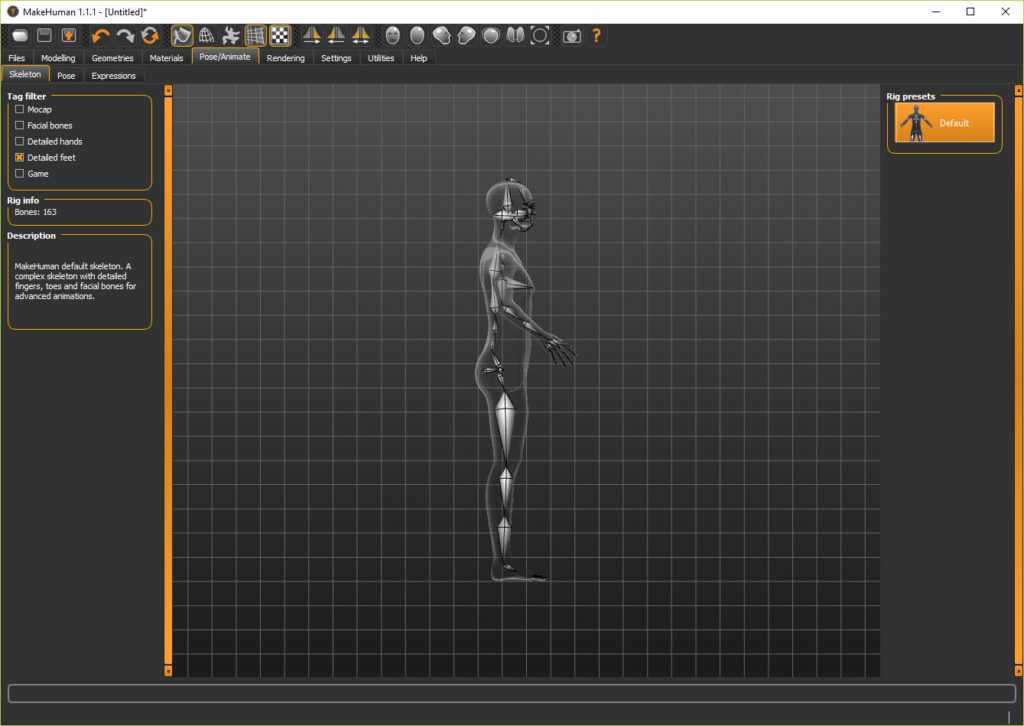

Note that SketchUp uses a subfolder named after the DAE itself, but ‘ textures’ is a typical name for some other apps… If I add the prefix ‘ file://’ SketchUp can’t then find the image-files. If I edit a standard file the path is in the format: The DAE should have a subfolder of image-files with it in the same location.ĭepending on how the exported works the file might be named after the DAE itself or be named something like ‘textures’, ‘images’ etc.
MAKEHUMAN TEXTURE SKIN
To demonstrate which regions end up where on the body, there is a special skin Annotated Skin in the skin repository. When I open the DAE file in a text editor I see these paths, which seem to accurately represent the relationship between DAE file and textures folder, if I understand correctly.įile://textures/middleage_lightskinned_male_diffuse.pngįile://textures/male_worksuit01_diffuse.pngįile://textures/male_worksuit01_normal.png A skin texture is basically a normal image, usually a PNG file with large dimensions (in the span between 1024x10x8192), with a simple text file descriptor (see MHMAT section below).

In both cases I get the model but not the textures. Youll have to go to Materials -> Skin -> then select a skin (other than default) from the menu to the far right. I’ve tried putting the DAE file in the folder with the textures, and placing the DAE file just outside the textures folder (how it exported from MakeHuman). For them to import right, you have to, firstly, have the texture files, and, secondly, place them to the same folder location in relation to the DAE file as they were when exported. At this stage, lets find out how MakeHuman software for humanoid characters has been used for pose / animation purpose.


 0 kommentar(er)
0 kommentar(er)
